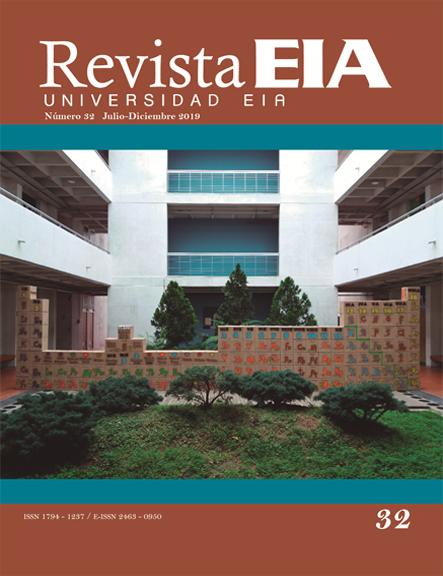Los grupos de interés en la programación de producción de un sistema de manufactura “Job Shop”
Los grupos de interés en la programación de producción de un sistema de manufactura “Job Shop”

Declaración del copyright
Los autores ceden en exclusiva a la Universidad EIA, con facultad de cesión a terceros, todos los derechos de explotación que deriven de los trabajos que sean aceptados para su publicación en la Revista EIA, así como en cualquier producto derivados de la misma y, en particular, los de reproducción, distribución, comunicación pública (incluida la puesta a disposición interactiva) y transformación (incluidas la adaptación, la modificación y, en su caso, la traducción), para todas las modalidades de explotación (a título enunciativo y no limitativo: en formato papel, electrónico, on-line, soporte informático o audiovisual, así como en cualquier otro formato, incluso con finalidad promocional o publicitaria y/o para la realización de productos derivados), para un ámbito territorial mundial y para toda la duración legal de los derechos prevista en el vigente texto difundido de la Ley de Propiedad Intelectual. Esta cesión la realizarán los autores sin derecho a ningún tipo de remuneración o indemnización.
La autorización conferida a la Revista EIA estará vigente a partir de la fecha en que se incluye en el volumen y número respectivo en el Sistema Open Journal Systems de la Revista EIA, así como en las diferentes bases e índices de datos en que se encuentra indexada la publicación.
Todos los contenidos de la Revista EIA, están publicados bajo la Licencia Creative Commons Atribución-NoComercial-NoDerivativa 4.0 Internacional
Mostrar biografía de los autores
En este artículo, se integran durante el proceso de programación de un sistema de manufactura tipo “Job Shop”, algunas expectativas de los siguientes grupos de interés: proveedores, sociedad, colaboradores de la organización, clientes y accionistas. De esta forma, se diseña un proceso de evaluación multiobjetivo, por medio del cual se pretende la minimización simultánea del conjunto de variables presentadas a continuación: tiempo proceso, emisiones dióxido de carbono, nivel de fatiga, factor global desperdicio y costos de producción. Asimismo, se expresa que el método propuesto, se encuentra fundamentado en la selección de aquellos individuos, cuyo grado de cercanía a determinados puntos de referencia, sea el máximo posible. Es así como, el desempeño del método anterior (método puntos referencia), se coteja con el desempeño de cierto método multiobjetivo, basado en análisis de subgrupos (método subgrupos). Al respecto, se observa que el primer método muestra, mayor capacidad para detectar la fluctuación estadística inherente a los datos. De este modo, se establece que el “método puntos referencia” supera el desempeño del “método subgrupos”, en cuanto al comportamiento de los parámetros “coeficiente de variación” y “rango”, para el caso de 4 (tiempo proceso, emisiones dióxido carbono, nivel fatiga, costos producción) de las 5 variables analizadas.
Visitas del artículo 619 | Visitas PDF 416
Descargas
- • Azadeh, A.; Goldansaz, S. y Zahedi-Anaraki, A. (2016). “Solving and optimizing a bi-objective open shop scheduling problem by a modified genetic algorithm”. International Journal of Advanced Manufacturing Technology, vol. 85, pp. 1603-1613.
- • Coca, G.; Castrillón, O. y Ruiz, S. (2013). “Metodología basada en los algoritmos VEGA y MOGA para solucionar un problema multi-objetivo en un sistema de producción Job Shop”. Revista EIA, vol. 13, pp. 175-191.
- • Deb, K. y Jain, H. (2014). “An Evolutionary Many-Objective Optimization Algorithm Using Reference-Point-Based Nondominated Sorting Approach, Part I: Solving Problems With Box Constraints”. IEEE Transactions on Evolutionary Computation, vol. 18, No. 4, pp. 577-601.
- • Haider, A. y Mirza, J. (2015). “An implementation of lean scheduling in a job shop environment”. Advances in Production Engineering & Management, vol. 10, No. 1, pp. 5-17.
- • Hao, X.; Gen, M.; Lin, L. y Suer, G. (2017). “Effective multiobjective EDA for bi-criteria stochastic Job-Shop scheduling problem”. Journal of intelligent Manufacturing, vol. 28, No. 3, pp. 833-845.




